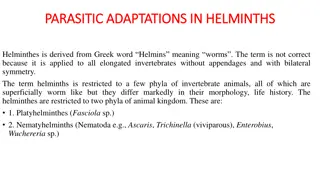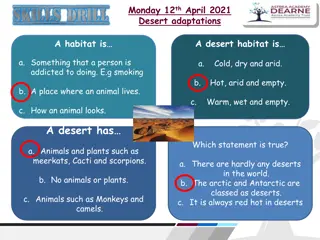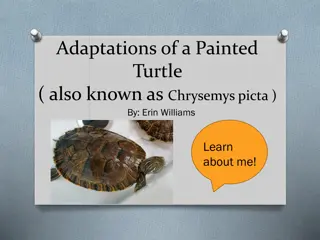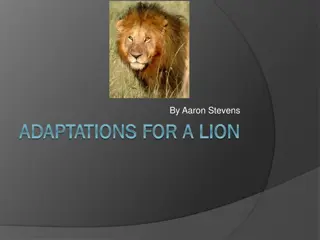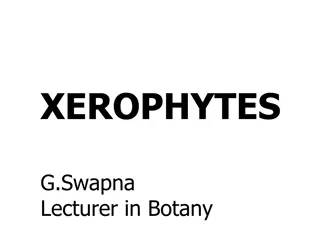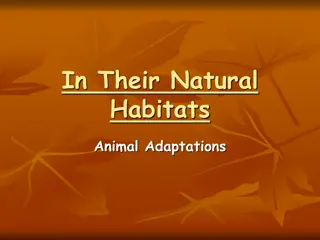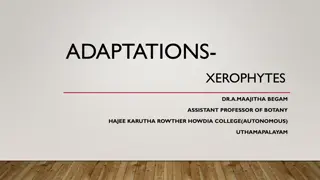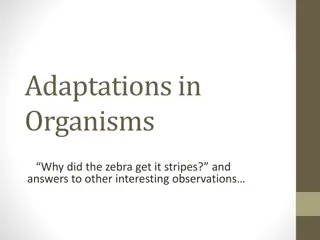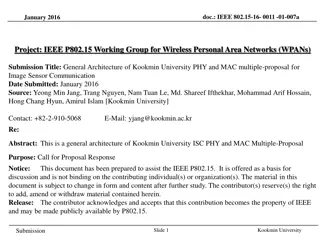Rate Adaptations in Network Communication
This presentation delves into rate adaptations in network communication, covering topics such as sender algorithms, transmission rules, and effects on TCP. The content includes explanations of sender behaviors and the impact on network performance. Strategies for optimizing transmission rates are discussed with insights from Roger Zimmermann and Ooi Wei Tsang's slides.
Download Presentation

Please find below an Image/Link to download the presentation.
The content on the website is provided AS IS for your information and personal use only. It may not be sold, licensed, or shared on other websites without obtaining consent from the author.If you encounter any issues during the download, it is possible that the publisher has removed the file from their server.
You are allowed to download the files provided on this website for personal or commercial use, subject to the condition that they are used lawfully. All files are the property of their respective owners.
The content on the website is provided AS IS for your information and personal use only. It may not be sold, licensed, or shared on other websites without obtaining consent from the author.
E N D
Presentation Transcript
Rate Adaptations NUS.SOC.CS5248-2012 Roger Zimmermann (based in part on slides by Ooi Wei Tsang)
You are Here Encoder Decoder Middlebox Receiver Sender Network NUS.SOC.CS5248-2012 Roger Zimmermann (based in part on slides by Ooi Wei Tsang)
Senders Algorithm open UDP socket foreach video frame chop into packets add RTP header send to network NUS.SOC.CS5248-2012 Roger Zimmermann (based in part on slides by Ooi Wei Tsang)
Senders Algorithm open UDP socket foreach video frame chop into packets add RTP header send to network wait for 1/fps seconds NUS.SOC.CS5248-2012 Roger Zimmermann (based in part on slides by Ooi Wei Tsang)
Senders Algorithm open UDP socket foreach video frame chop into packets add RTP header send to network wait for 1/fps seconds Send frames at equal time distance. NUS.SOC.CS5248-2012 Roger Zimmermann (based in part on slides by Ooi Wei Tsang)
Senders Algorithm open UDP socket foreach video frame chop into packets foreach packet add RTP header send to network wait for size/bps seconds Send data at constant bandwidth. NUS.SOC.CS5248-2012 Roger Zimmermann (based in part on slides by Ooi Wei Tsang)
Rules Transmission rate should match encoding rate Transmission should not be too bursty NUS.SOC.CS5248-2012 Roger Zimmermann (based in part on slides by Ooi Wei Tsang)
Two Approaches 1. Just send at a fix rate or I hope the network can handle it approach NUS.SOC.CS5248-2012 Roger Zimmermann (based in part on slides by Ooi Wei Tsang)
Effects on TCP: Simulation From Sisalem, Emanuel and Schulzrinne paper on Direct Adjustment Algorithm. NUS.SOC.CS5248-2012 Roger Zimmermann (based in part on slides by Ooi Wei Tsang)
Effects on TCP NUS.SOC.CS5248-2012 Roger Zimmermann (based in part on slides by Ooi Wei Tsang)
DAA Parameters Adaptive RTP flows Additive increase/multiplicative decrease 50 kb and factor 0.875 RTCP: min 5 sec inter-report time Loss thresholds: 5% and 10% TCP Immediate loss notification Transmission window is halved NUS.SOC.CS5248-2012 Roger Zimmermann (based in part on slides by Ooi Wei Tsang)
Two Approaches 1. Just send at a fixed rate or I hope the network can handle it approach 2. Adapt transmission/encoding rate to network condition NUS.SOC.CS5248-2012 Roger Zimmermann (based in part on slides by Ooi Wei Tsang)
How to Adapt? if network condition is bad reduce rate else if network condition is so-so do nothing else if network condition is good increase rate NUS.SOC.CS5248-2012 Roger Zimmermann (based in part on slides by Ooi Wei Tsang)
How to .. Know network condition is bad ? Increase/decrease rate? NUS.SOC.CS5248-2012 Roger Zimmermann (based in part on slides by Ooi Wei Tsang)
Adapting Output Rate if network condition is bad else if network condition is so-so do nothing else if network condition is good NUS.SOC.CS5248-2012 Roger Zimmermann (based in part on slides by Ooi Wei Tsang)
Adapting Output Rate Multiplicative decrease if network condition is bad else if network condition is so-so do nothing else if network condition is good Additive increase NUS.SOC.CS5248-2012 Roger Zimmermann (based in part on slides by Ooi Wei Tsang)
Question: What should and be? NUS.SOC.CS5248-2012 Roger Zimmermann (based in part on slides by Ooi Wei Tsang)
Observation 1 Should never change your rate more than an equivalent TCP stream. NUS.SOC.CS5248-2012 Roger Zimmermann (based in part on slides by Ooi Wei Tsang)
Observation 2 and should depend on network conditions and current rate. NUS.SOC.CS5248-2012 Roger Zimmermann (based in part on slides by Ooi Wei Tsang)
Goal: Fair Share of Bottleneck let r b S : current rate : bottleneck bandwidth : current share NUS.SOC.CS5248-2012 Roger Zimmermann (based in part on slides by Ooi Wei Tsang)
S vs S 1 NUS.SOC.CS5248-2012 Roger Zimmermann (based in part on slides by Ooi Wei Tsang)
Value of (Assuming one receiver) NUS.SOC.CS5248-2012 Roger Zimmermann (based in part on slides by Ooi Wei Tsang)
Limit of M : packet size : round trip time T : period between evaluation of NUS.SOC.CS5248-2012 Roger Zimmermann (based in part on slides by Ooi Wei Tsang)
Loss rate vs 1 1 loss rate NUS.SOC.CS5248-2012 Roger Zimmermann (based in part on slides by Ooi Wei Tsang)
Value of where is the loss rate k is a constant (Assuming one receiver) NUS.SOC.CS5248-2012 Roger Zimmermann (based in part on slides by Ooi Wei Tsang)
NUS.SOC.CS5248-2012 Roger Zimmermann (based in part on slides by Ooi Wei Tsang)
What is Needed? NUS.SOC.CS5248-2012 Roger Zimmermann (based in part on slides by Ooi Wei Tsang)
Estimating b : Packet Pair NUS.SOC.CS5248-2012 Roger Zimmermann (based in part on slides by Ooi Wei Tsang)
Estimating b : Packet Pair NUS.SOC.CS5248-2012 Roger Zimmermann (based in part on slides by Ooi Wei Tsang)
Estimating b : Packet Pair NUS.SOC.CS5248-2012 Roger Zimmermann (based in part on slides by Ooi Wei Tsang)
Evaluation NUS.SOC.CS5248-2012 Roger Zimmermann (based in part on slides by Ooi Wei Tsang)
More TCP-Friendly Rate Control NUS.SOC.CS5248-2012 Roger Zimmermann (based in part on slides by Ooi Wei Tsang)
TCP-Equation Window size behavior in TCP/IP with constant loss probability T. Ott, J. Kemperman, and M. Mathis June 1997, HPCS 1997 NUS.SOC.CS5248-2012 Roger Zimmermann (based in part on slides by Ooi Wei Tsang)
TCP-Equation Equation-Based Congestion Control for Unicast Applications Sally Floyd, Mark Handley, Jitendra Padhye, and Joerg Widmer. August 2000. SIGCOMM 2000 NUS.SOC.CS5248-2012 Roger Zimmermann (based in part on slides by Ooi Wei Tsang)
Another Transport Protocol Datagram Congestion Control Protocol (DCCP) Implements congestion control but not reliability NUS.SOC.CS5248-2012 Roger Zimmermann (based in part on slides by Ooi Wei Tsang)
Rules Transmission rate should match encoding rate Transmission should not be too bursty NUS.SOC.CS5248-2012 Roger Zimmermann (based in part on slides by Ooi Wei Tsang)
Rate Control Given a rate, how to encode the video with the given rate? NUS.SOC.CS5248-2012 Roger Zimmermann (based in part on slides by Ooi Wei Tsang)
Reduce Frame Rate Live Video Stored Video NUS.SOC.CS5248-2012 Roger Zimmermann (based in part on slides by Ooi Wei Tsang)
Reduce Frame Resolution Live Video Stored Video NUS.SOC.CS5248-2012 Roger Zimmermann (based in part on slides by Ooi Wei Tsang)
Increase Quantization Live Video Stored Video NUS.SOC.CS5248-2012 Roger Zimmermann (based in part on slides by Ooi Wei Tsang)
Drop AC components Live Video Stored Video NUS.SOC.CS5248-2012 Roger Zimmermann (based in part on slides by Ooi Wei Tsang)
Trouble with Stored Video Reducing rate requires partial decoding and re-encoding Solution: Layered Video NUS.SOC.CS5248-2012 Roger Zimmermann (based in part on slides by Ooi Wei Tsang)
Layered Video or Scalable Video NUS.SOC.CS5248-2012 Roger Zimmermann (based in part on slides by Ooi Wei Tsang)
Layered Video Layer 1 Layer 2 Layer 3 NUS.SOC.CS5248-2012 Roger Zimmermann (based in part on slides by Ooi Wei Tsang)
Layering Scheme Temporal (Frame Rate) Layering NUS.SOC.CS5248-2012 Roger Zimmermann (based in part on slides by Ooi Wei Tsang)
Layering Scheme Spatial (Resolution) Layering NUS.SOC.CS5248-2012 Roger Zimmermann (based in part on slides by Ooi Wei Tsang)
Layering Scheme DCT Layering; SNR (Quality) Layering 30 8 2 30 8 2 0 30 -6 -1 -6 -1 0 0 1 1 0 0 0 0 0 0 0 NUS.SOC.CS5248-2012 Roger Zimmermann (based in part on slides by Ooi Wei Tsang)
Layering Scheme Fine Granularity Scalability (FGS): e.g., MPEG-4 1 1 0 0 0 0 0 0 1 1 1 0 0 0 1 0 1 0 0 1 0 1 0 1 1 0 0 0 0 1 0 0 NUS.SOC.CS5248-2012 Roger Zimmermann (based in part on slides by Ooi Wei Tsang)
Layered Video SVC: Scalable Video Coding Base-layer plus enhancement layers Each received layer improves the quality Layer n+1 depends on layer n MDC: Multiple Description Coding Layers are independent Each received layer improves the quality NUS.SOC.CS5248-2012 Roger Zimmermann (based in part on slides by Ooi Wei Tsang)
Layered Video BUT: Layered video codecs are less bandwidth-efficient than single-layer codecs. NUS.SOC.CS5248-2012 Roger Zimmermann (based in part on slides by Ooi Wei Tsang)
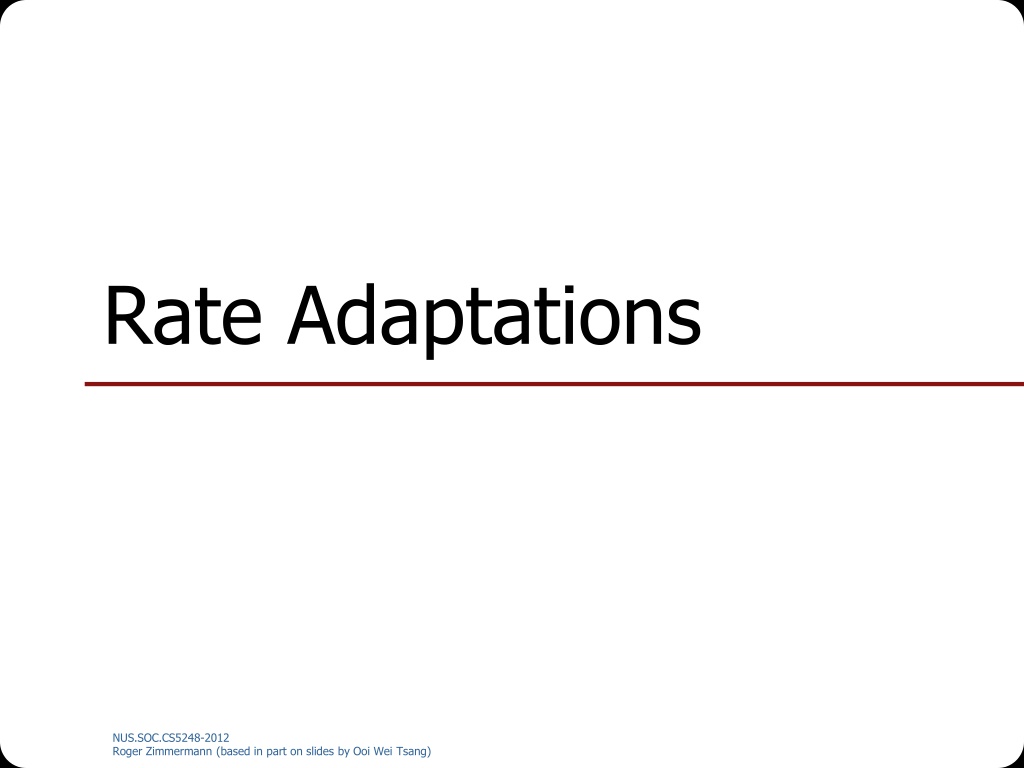
 undefined
undefined
























